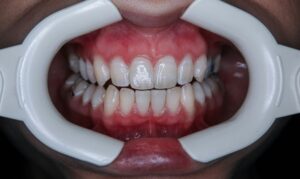Napping has long been associated with relaxation, rejuvenation, and improved mood, but is it actually good for your health? While some cultures embrace napping as an essential part of daily life, others view it as a sign of laziness. Modern research, however, is shedding light on the potential benefits of naps and how they can positively impact mental clarity, mood, and overall health. When used strategically, napping can be a valuable tool for enhancing cognitive performance, reducing stress, and improving physical health. Here, we’ll explore the benefits of napping, its impact on the body and mind, and best practices to incorporate naps into a healthy lifestyle.
The Science of Napping
The human body has a natural circadian rhythm—a biological clock that regulates sleep and wake cycles. In addition to this, many people experience a natural dip in energy levels in the early afternoon, usually between 1:00 and 3:00 PM, which is why naps often feel most appealing during this time. Napping can help counteract this afternoon slump by providing the body and mind with a chance to recharge, improving focus and mood.
Napping has different stages, with each one providing unique benefits. Short naps, lasting 10-20 minutes, typically consist of light sleep and can improve alertness and energy without causing grogginess. Longer naps, ranging from 60-90 minutes, allow for a full sleep cycle, which includes both light and deep sleep stages, and can enhance memory, creativity, and emotional resilience. Understanding how naps affect the body and brain can help you make informed choices about napping to maximize its benefits.
Benefits of Napping
The advantages of napping go beyond just feeling rested; naps can offer a range of benefits for both mental and physical health. Here are some of the most well-researched benefits associated with napping.
1. Improves Mental Alertness and Cognitive Function
One of the most well-documented benefits of napping is its ability to enhance alertness and mental performance. Even short naps of 10-20 minutes have been shown to increase attention, focus, and overall cognitive function, making them especially valuable for people who experience mid-day fatigue. Napping provides a quick recharge, helping you stay sharp and productive for the rest of the day.
For those who work in demanding or high-stress jobs, a nap can be a simple yet effective way to maintain cognitive performance. Studies show that people who take short naps experience improved reaction times, better concentration, and greater accuracy in completing tasks. By integrating naps into your daily routine, you can support mental clarity and focus, which are crucial for productivity and effective decision-making.
2. Enhances Memory and Learning
Napping also plays a role in memory consolidation and learning. During sleep, the brain processes and stores new information, a process that is especially important for learning and retaining skills. Studies suggest that a 60-90 minute nap that includes REM (rapid eye movement) sleep can improve memory recall and support creative problem-solving.
For students or anyone engaged in activities that require learning, a nap after studying or practicing can help reinforce the information, allowing it to be stored more effectively. By napping, you create an opportunity for the brain to process and organize new information, making it easier to access later. This is why many educators and experts recommend naps as a study aid, especially when preparing for exams or learning new skills.
3. Reduces Stress and Enhances Emotional Health
Napping can serve as a powerful stress-relief tool, providing the body with a natural way to reset and relax. When we’re sleep-deprived or fatigued, our body produces more cortisol, a stress hormone that can lead to increased feelings of anxiety, irritability, and overwhelm. A short nap can lower cortisol levels, helping you feel more balanced, calm, and emotionally resilient.
Taking a nap during stressful periods can also help improve mood and emotional health. In fact, research shows that naps can enhance emotional regulation, making it easier to handle daily stressors and negative emotions. For those experiencing high levels of stress, a short nap can serve as a mental break, reducing anxiety and promoting a more positive outlook.
4. Boosts Physical Health and Reduces Risk of Heart Disease
Napping isn’t just beneficial for mental health—it can also support physical health, particularly cardiovascular health. Studies have found that people who take regular naps have lower blood pressure, improved circulation, and a reduced risk of heart disease. Short naps can relieve cardiovascular stress by lowering heart rate and allowing the body to recover from the demands of daily life.
Additionally, naps can help reduce inflammation and improve the immune system’s function, which plays a key role in overall health. Chronic sleep deprivation has been linked to an increased risk of cardiovascular diseases, obesity, and diabetes, so a nap can serve as a protective factor by providing extra rest. Integrating regular naps into your routine may lower the risk of heart disease, improve metabolic health, and enhance overall physical resilience.
5. Improves Physical Performance and Recovery
For athletes and physically active individuals, napping can be an effective way to enhance physical performance and speed up recovery. Naps allow the body to engage in cellular repair, muscle recovery, and hormonal regulation, all of which are essential for physical health. A nap after exercise can help reduce muscle soreness and restore energy, which is crucial for athletes looking to maintain optimal performance.
A short nap also helps regulate cortisol levels and supports the release of growth hormone, which is vital for muscle repair and recovery. Many athletes use naps as a strategy to balance intense training schedules, as napping provides the body with the rest it needs to recover and build strength. For anyone who engages in regular physical activity, naps can serve as a powerful tool to maintain energy and prevent fatigue.
6. Increases Creativity and Problem-Solving Skills
Another fascinating benefit of napping is its ability to enhance creativity and problem-solving skills. REM sleep, often experienced in longer naps, is associated with the processing of complex ideas, and it supports abstract thinking, creativity, and innovation. Many well-known creatives, including artists, scientists, and inventors, have attributed their breakthroughs to a quick nap or a moment of mental rest.
During REM sleep, the brain forms new connections between seemingly unrelated pieces of information, which can inspire creative thinking and lead to innovative solutions. By incorporating naps that include REM sleep, individuals may find that their problem-solving abilities improve, making naps an effective strategy for tackling complex challenges.
7. Supports Weight Management and Reduces Cravings
Napping can even support weight management by reducing cravings and helping regulate hunger hormones. Lack of sleep disrupts levels of ghrelin (a hormone that promotes hunger) and leptin (a hormone that signals fullness), often leading to overeating and sugar cravings. When we’re tired, the body craves quick energy sources, such as sugary or high-calorie foods, which can contribute to weight gain over time.
A short nap can help balance these hormones, reducing cravings and promoting healthier eating habits. By getting enough rest, whether through naps or a full night’s sleep, you can support healthy weight management and reduce the tendency to overeat or rely on unhealthy snacks for energy.
Different Types of Naps and Their Benefits
Naps are not one-size-fits-all; different types of naps provide different benefits. Here’s an overview of the main types of naps and what each one offers:
- Power Nap (10-20 minutes): Ideal for a quick boost in alertness and energy without entering deep sleep, which can cause grogginess. Power naps are effective for increasing focus and reducing fatigue.
- Recovery Nap (30-60 minutes): This nap provides a mix of light and deep sleep, helping relieve sleep deprivation and reducing stress. It’s beneficial for people who haven’t had enough nighttime rest and need a mid-day boost.
- REM Nap (60-90 minutes): This longer nap includes REM sleep, which is ideal for memory consolidation, emotional processing, and creativity. REM naps are beneficial for those looking to enhance cognitive performance, improve mood, or engage in creative problem-solving.
Each type of nap offers unique benefits, and the ideal length often depends on individual needs, daily schedules, and the desired outcomes.
Best Practices for Napping
To maximize the benefits of napping, it’s essential to follow some best practices that make the experience more refreshing and effective. Here are some tips for optimal napping:
1. Keep It Short When Possible
For most people, shorter naps (10-20 minutes) are ideal for preventing sleep inertia, the groggy feeling that occurs when waking up from deep sleep. Short naps are less likely to interfere with nighttime sleep and can provide a quick boost in energy and alertness. If you need a longer nap, aim for 60-90 minutes to complete a full sleep cycle, which includes REM sleep.
2. Nap Early in the Day
To avoid interfering with nighttime sleep, it’s best to nap in the early afternoon—typically between 1:00 and 3:00 PM. This aligns with the body’s natural circadian rhythm and minimizes the risk of staying awake later at night. Napping too late in the day can make it harder to fall asleep at your regular bedtime, disrupting your overall sleep schedule.
3. Create a Relaxing Nap Environment
A comfortable, quiet, and dimly lit environment is essential for a restful nap. Try to nap in a place where you won’t be disturbed, and consider using an eye mask or earplugs to block out light and noise. The ideal room temperature for sleeping is around 60-67°F (15-20°C), so keep the environment cool and cozy.
4. Listen to Your Body
Everyone has different sleep needs, so it’s important to listen to your body and find a nap routine that works for you. Some people feel refreshed with a 10-minute nap, while others prefer longer naps to feel fully recharged. Experiment with different nap lengths and times to discover what feels best and fits your lifestyle.
5. Use Naps Strategically
While naps can be beneficial, they’re most effective when used strategically. For example, if you know you’ll have a long day ahead, a short nap can provide a preemptive energy boost. Alternatively, if you experience midday fatigue, a quick power nap can help restore focus and motivation. Using naps purposefully can make them an effective tool for productivity and well-being.
Potential Downsides of Napping
Although napping offers numerous benefits, there are some potential downsides to consider, especially for those who have difficulty sleeping at night or are prone to insomnia. Here are a few points to keep in mind:
- Sleep Inertia: Waking up from deep sleep can cause grogginess, known as sleep inertia, which may make it challenging to feel alert right after a nap.
- Interference with Nighttime Sleep: Napping too late or too long may disrupt nighttime sleep patterns, leading to difficulties falling asleep at night.
- Dependency on Naps: Relying on naps to compensate for poor nighttime sleep may prevent individuals from addressing underlying sleep issues or sleep disorders.
For those with insomnia or other sleep-related concerns, naps may need to be limited or avoided to ensure regular, restorative nighttime sleep.
Conclusion
Napping, when practiced mindfully, offers a range of benefits that support mental clarity, physical health, emotional well-being, and creativity. By improving alertness, boosting memory, and providing stress relief, naps can be a powerful addition to a balanced lifestyle. While everyone’s napping needs are different, following best practices—such as keeping naps short, choosing the right time, and creating a relaxing environment—can maximize the benefits and prevent any negative impact on nighttime sleep.
Whether you need a quick energy boost or a longer recovery nap, integrating naps into your routine can enhance both short-term productivity and long-term health. Ultimately, the key to successful napping lies in moderation and listening to your body, allowing naps to complement a healthy sleep schedule and overall wellness strategy.




